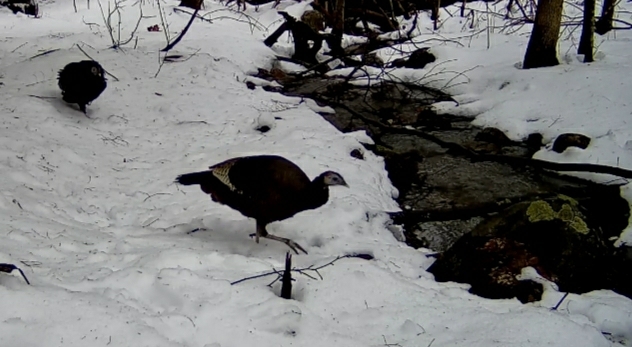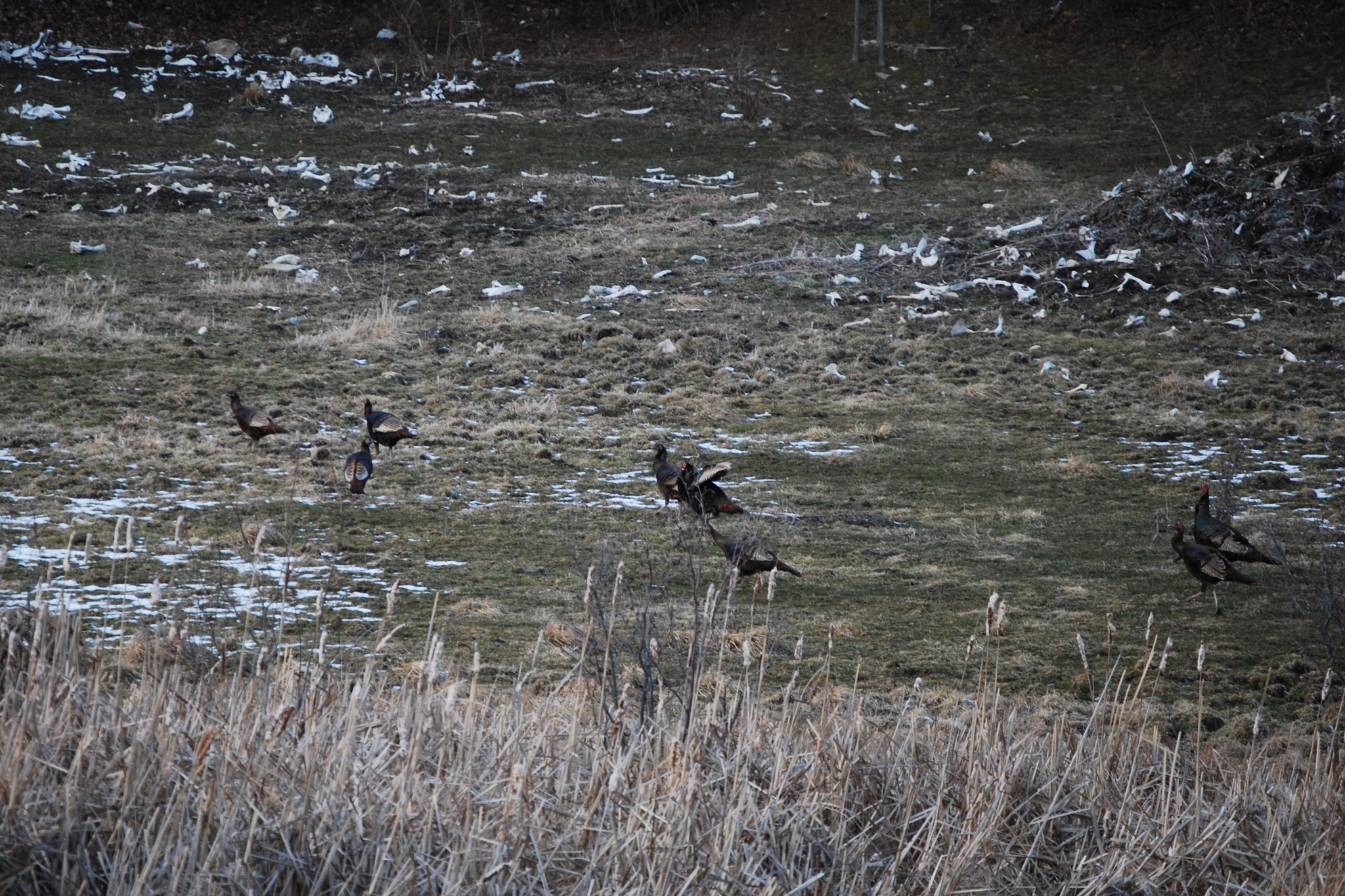Array
(
[0] => Array
(
[id] => 2
[ids] => 165
[types] => animals
[lat] => 43.762787
[lon] => -73.044366
[date] => 2024-03-27
[avtorfoto] => Sam Buswell
[observation_url] => https://www.inaturalist.org/observations/204255318
[name] => Meleagris gallopavo silvestris
Meleagris gallopavo silvestris - United States/Vermont/Rutland
Hunting
Cooking
Meleagris gallopavo silvestris ?Wild turkey
http://en.wikipedia.org/wiki/Wild_turkey August: Training. Young turkeys learn to forage and hide from predators in forests and thickets.
May show aggression during breeding season. Traditional game bird of North American Native Americans. Important in cultural and ceremonial events. Commonly used in festive meals.
Inhabits forests and thickets in eastern North America. Feeds on seeds, berries, insects, and small animals. Cautious and flushes quickly when threatened.
Walk-up hunting in early spring and fall Use of calls and decoys Hunting from blinds and concealment in dense grass
Turkeys are cautious and alert. Best hunting time is early morning. Use shot size #4 or #5.
1 July, 2025
27 March, 2024
6 July, 2021
28 June, 2019
11 June, 2019
2 March, 2019
22 February, 2019
5 February, 2019
9 January, 2019
1 December, 2018
17 November, 2018
1 March, 2018
8 December, 2016
28 February, 2016
13 September, 2015
13 December, 2014
29 November, 2014
28 March, 2014
30 January, 2012
26 December, 2010
Meat is very dense and juicy. Feathers should be removed carefully. Cool as soon as possible after gutting. Meat is tougher than domestic turkey.
Breast: Frying, grilling, smoking
Herb-Roasted Turkey (Pan-fry)
Flavorful dish with garlic and thyme
1. Marinate meat with garlic and herbs.
Roasted Turkey with Berries (Roasting)
Meat with sweet and sour flavor
1. Rub carcass with salt and pepper.
Turkey in Creamy Mushroom Sauce (Braising)
Creamy sauce highlights meat flavor
1. Brown meat until golden.
Turkey Vegetable Soup (Boiling)
Nutritious and warming soup
1. Make broth from bones and meat.
 United States · Vermont · Rutland
United States · Vermont · Rutland


















